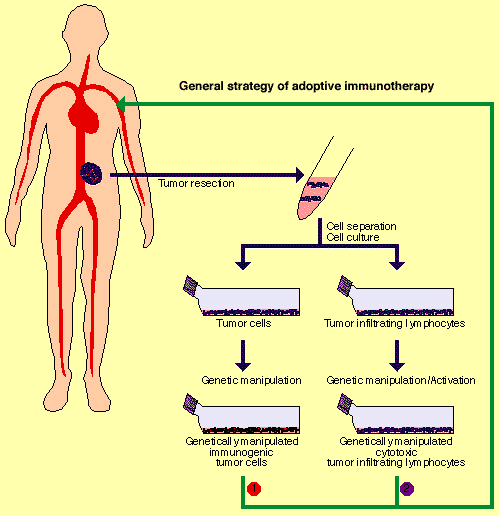
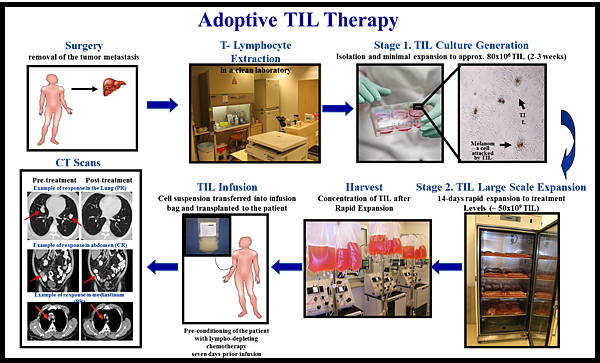
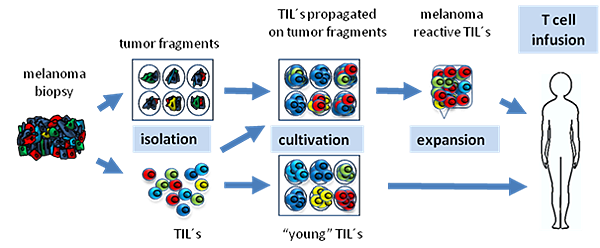
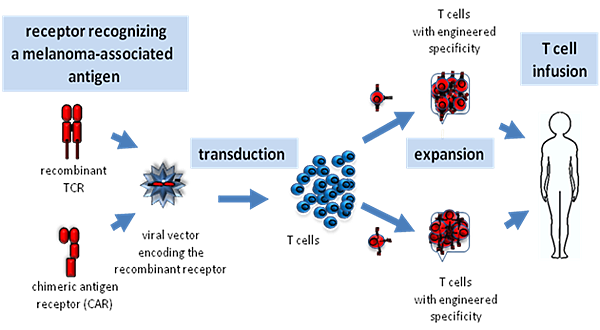
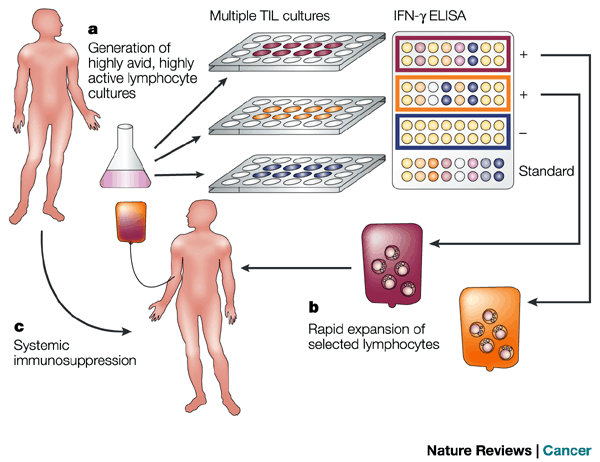
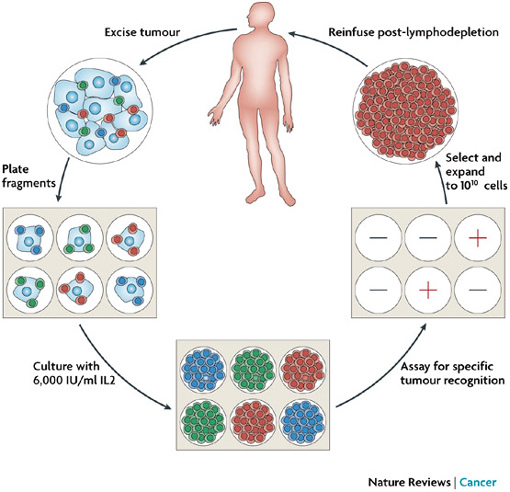


Adoptive cell transfer
Adoptive cell transfer can refer to either the transfer of cells, most commonly immune-derived cells, back into the same patient or into a new recipient host with the goal of transferring the immunologic functionality and characteristics into the new host.
If possible, use of autologous cells helps the recipient by minimizing GVHD issues. For isolation of immune cells for adpotive transfer, a phlebotomist draws blood into tubes containing anticoagulant and the PBM(buffy coat)cells are isolated, typically by density barrier centrifugation. In T cell-based therapies, these cells are expanded in vitro using cell culture methods relying heavily on the Immunomodulatory action of Interleukin-2 and returned to the patient in large numbers intravenously in an activated state. Anti-CD3 antibody is commonly used to promote the proliferation of T cells in culture. Research into interleukin-21 suggests it may also play an important role in enhancing the efficacy of T cell based therapies prepared in vitro.
An emerging treatment modality for various diseases is the transfer of stem cells to achieve therapeutic effect. Clinically, this approach has been exploited to transfer either Immune-promoting or Tolerogenic cells(often lymphocytes)to patients to either enhance immunity against viruses and cancer or to promote tolerance in the setting of autoimmune disease, such as Type I diabetes or rheumatoid arthritis.
Cells used in adoptive therapy may be genetically modified using recombinant DNA technology to achieve any number of goals. One example of this in the case of T cell adoptive therapy is the addition of Chimeric antigen receptors, or CARs, to redirect the specificity of cytotoxic and helper T cells.



 留言列表
留言列表
